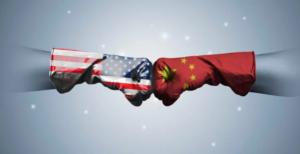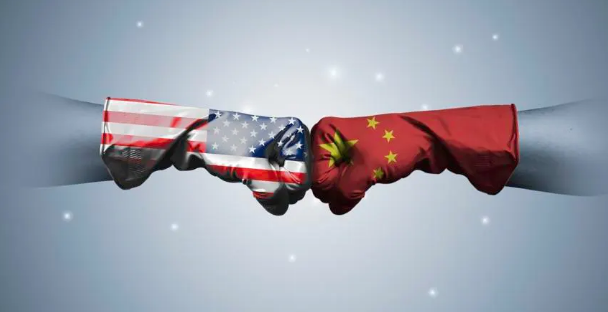The ongoing trade tensions between China and the United States have sent shockwaves throughout the global economy, with sectors like manufacturing, technology, and commodities feeling the brunt of the impact. However, one space that has responded in surprisingly dynamic ways is the cryptocurrency market.
As the two largest economies on the planet square off in a prolonged tariff conflict, investors across the world are left wondering how these macroeconomic tensions will influence digital assets like Bitcoin, Ethereum, and stablecoins. For crypto investors, the tariff war isn’t just about import duties—it’s about volatility, opportunity, and evolving market dynamics.
In this article, we break down how the China-USA tariff clash is shaping crypto investment trends, influencing asset behavior, and creating new opportunities (and risks) for global investors.
The Trade War Landscape: A Brief Overview
Since 2018, the U.S. and China have been locked in a tit-for-tat tariff battle, imposing hundreds of billions of dollars in duties on each other’s goods. The aim? To rebalance trade and protect intellectual property rights. The result? Heightened economic uncertainty, disrupted global supply chains, and volatile financial markets.
As these traditional sectors struggle to adapt, many investors are diversifying into non-traditional assets—especially decentralized financial instruments like cryptocurrencies.
Why Crypto Reacts to Trade Tensions
Unlike traditional fiat currencies, cryptocurrencies are decentralized, borderless, and free from direct control by central banks. This makes them a unique asset class during periods of geopolitical tension.
1. Bitcoin as a Hedge Against Economic Uncertainty
Much like gold, Bitcoin is increasingly being viewed as a store of value. When trade disputes destabilize markets, investors often seek refuge in assets that aren’t tied to any single government or economic policy. During the height of the U.S.-China tariff standoff, Bitcoin frequently spiked in value as confidence in traditional markets waned.
2. Currency Devaluation and Capital Flight
Trade wars can weaken a country’s currency. When the Chinese yuan experienced devaluation amid tariff tensions, there was a noticeable uptick in Bitcoin transactions originating from China. For investors trying to hedge against a weakening yuan or to bypass capital controls, crypto became an appealing option.
3. Market Volatility Attracts Speculators
Heightened volatility triggered by geopolitical events often draws in speculative capital. Day traders and institutional investors alike look to profit from market swings—and crypto, with its 24/7 nature and high liquidity, becomes the ideal battlefield.
China’s Crypto Clampdown: A Double-Edged Sword
China has long had a complicated relationship with cryptocurrency. While it bans crypto trading and mining within its borders, the country also leads in blockchain development and CBDC (Central Bank Digital Currency) innovation.
Impact on Mining and Market Supply
In response to both domestic energy concerns and international scrutiny, China cracked down on crypto mining in 2021. This led to a mass exodus of miners to crypto-friendly regions such as the U.S., Kazakhstan, and Canada. The shift decentralized the Bitcoin network further and made the mining industry more geographically diverse.
Continued Demand Despite Regulation
Despite government restrictions, Chinese interest in cryptocurrencies hasn’t waned. Investors continue to find offshore access to exchanges, use stablecoins for cross-border transactions, and participate in decentralized finance (DeFi) via VPNs or intermediaries. Tariff-related economic anxiety has only increased this underground demand.
U.S. Regulatory Response to the Trade War and Crypto
On the other side, the United States is also tightening its regulatory framework for crypto, especially in light of national security, investor protection, and strategic positioning against China.
- U.S. regulators have become more active in scrutinizing stablecoins, exchanges, and DeFi platforms.
- Discussions around a U.S. digital dollar (CBDC) have gained traction as a counterbalance to China’s digital yuan.
- American mining firms have benefited from the migration of Chinese miners, solidifying the U.S. as a dominant force in Bitcoin mining.
For crypto investors, the evolving regulatory landscape in the U.S. means increased transparency and institutional support, but also greater compliance obligations and scrutiny.
How Crypto Investors Can Navigate the Tariff-Fueled Landscape
Whether you’re a retail investor or an institution, understanding the interplay between trade policy and crypto markets is crucial for strategic decision-making.
1. Monitor Macroeconomic Indicators
Keep an eye on tariff announcements, currency exchange rates, inflation metrics, and central bank policy. These factors often foreshadow major crypto market movements.
2. Diversify Holdings
In times of economic tension, diversification is key. Balancing between Bitcoin, Ethereum, stablecoins, and even tokenized assets can provide both growth potential and risk mitigation.
3. Use Stablecoins Strategically
Stablecoins like USDT and USDC are ideal for hedging during volatility, enabling you to temporarily exit risky positions without converting back to fiat.
4. Leverage Long-Term Trends
While trade wars may cause short-term disruptions, the long-term adoption of blockchain and decentralized finance is accelerating. Investors with a long view can benefit from dips caused by geopolitical jitters.
Global Implications: Crypto’s Role in Economic Sovereignty
The China-USA trade war is more than a bilateral dispute—it’s a global battle over economic supremacy, innovation, and digital infrastructure. Cryptocurrencies, as decentralized and programmable assets, are redefining the tools that nations and individuals use to assert economic autonomy.
- Emerging markets increasingly turn to crypto to escape the fallout of major power struggles.
- Global remittance systems are being disrupted by faster, cheaper blockchain-based solutions.
- Private investors now have tools once reserved for institutions or sovereign entities.
In this context, the U.S.-China tariff war is accelerating a shift away from centralized, state-controlled finance toward a more democratized, decentralized financial ecosystem.
Conclusion: Crypto in a Trade-Torn World
The clash between China and the U.S. is a defining feature of the 21st-century global economy—and cryptocurrencies are squarely at the center of this transformation. From being a speculative asset to a strategic hedge, crypto’s role is evolving rapidly in response to international tensions.
For investors, this means more volatility—but also more opportunity. By understanding the deepening ties between geopolitical conflict and crypto markets, you can position yourself to ride the waves of change, rather than being capsized by them.
As the world grapples with shifting alliances and digital innovation, one thing is certain: cryptocurrency is no longer on the fringe—it’s becoming a core asset class in the global economic arena.
Would you like this article optimized with a meta description, SEO tags, and targeted keywords? Or should I convert this into a newsletter or LinkedIn post for your audience?

Also Read :
